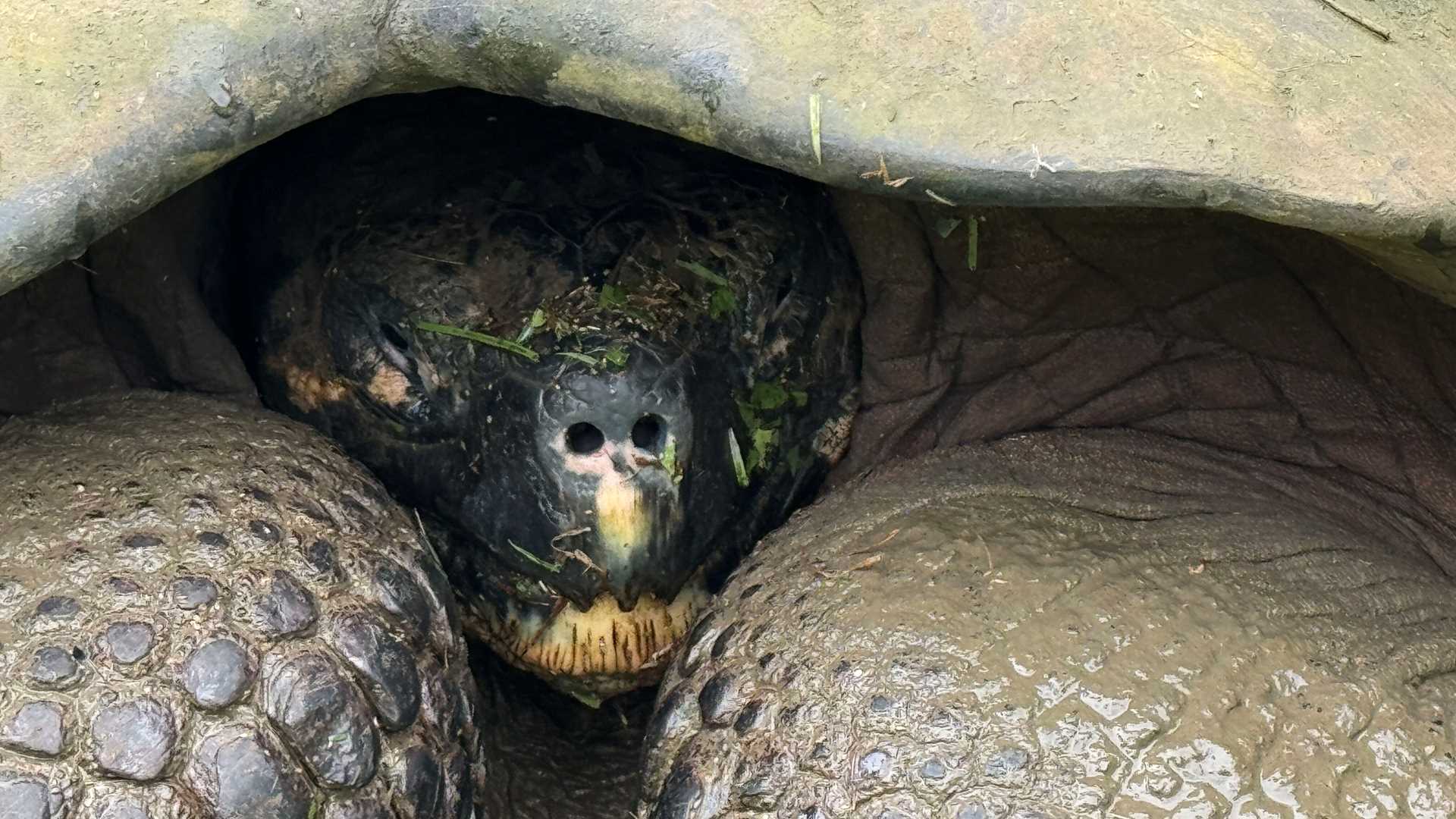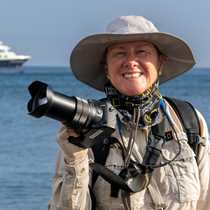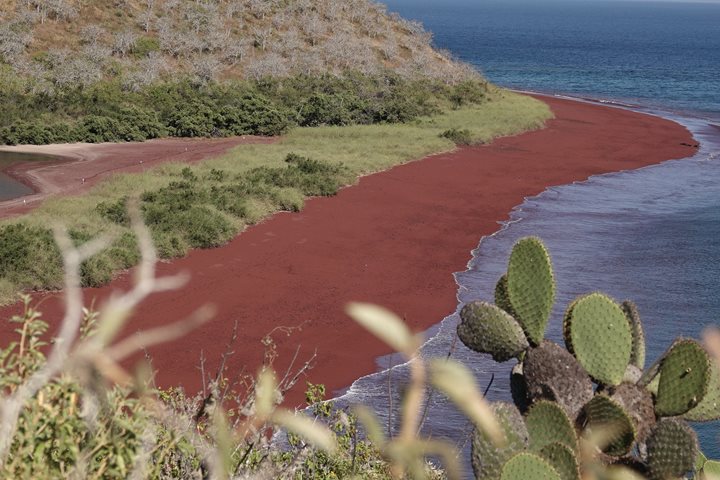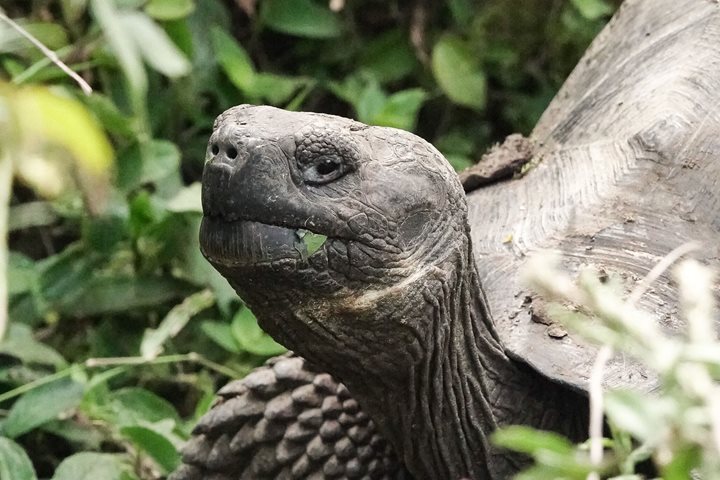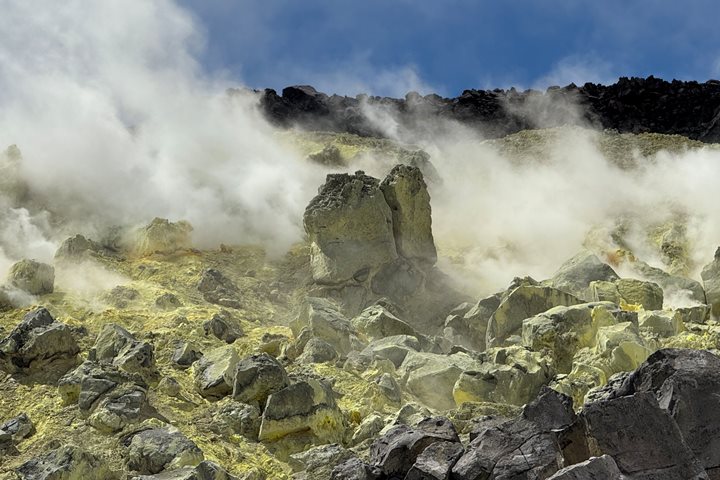Giant tortoises made for a grand finale! The island of Santa Cruz is home not only to giant tortoises but also to the headquarters of the Galápagos National Park and the facilities of the Charles Darwin Research Station. From small, teacup-sized tortoise hatchlings all the way to the true giants at over 400 pounds, this is their home. Many of them will be returned to their island of origin once they are large enough to withstand the trials of life in the wild. The tortoises are free to roam the flanks of this island and wander where they will. They spend time inside the Tortoise Reserve established by the park and travel over private property, under fences, and across roads.
- Daily Expedition Reports
- 20 Jun 2025
Santa Cruz Island, 6/20/2025, National Geographic Delfina
- Aboard the National Geographic Delfina
- Galápagos
Cindy Manning, Expedition Leader
Cindy was raised in a family that was fortunate enough to live in many different countries across the globe. During her formative years, she counted Latin America and Europe as home, with periods in-between living in Illinois and Indiana, where she a...
Read MoreShare Report
Galápagos by Catamaran: An Intimate Voyage
VIEW ITINERARYRelated Reports
6/26/2025
Read
National Geographic Delfina
Santa Cruz Island
Today we anchored in Academy Bay on Santa Cruz Island. During the first part of the morning, we went to Fausto Llerena Giant Tortoises Breeding Center. This is where some species of giant tortoises are bred in captivity. After walking through the center and observing young and adult tortoises, we enjoyed exploring the largest town in Galapagos. We had lunch at a charming local restaurant, and from there we went to the highlands where we had a great time observing wild giant tortoises in their natural habitat. This afternoon we found several tortoises feeding, while others were enjoying a great volcanic mud bath.
6/25/2025
Read
National Geographic Delfina
Isabela Island
We spent the entire morning and part of the afternoon exploring Sierra Negra, specifically the sulfur mine area in the southwestern corner inside the caldera. The caldera is considered one of the largest in the world. It was an adventurous ride up the flank of the volcano in a local chiva (open-sided bus used all over Ecuador in rural areas). Then we walked, one way two kilometers, which included a descent of 320 feet, then an ascent to the sulfur fumaroles of another 200 feet. On return, we did it all again!

